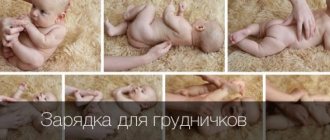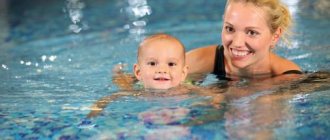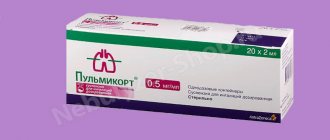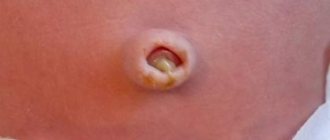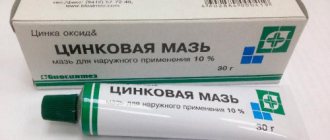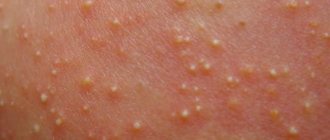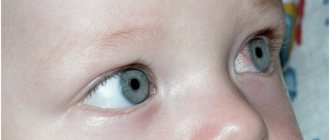Colds and flu can be very dangerous: especially for children. With the onset of cold weather, the risk of infection increases several times. How to quickly and effectively cope with the disease? To treat diseases of the respiratory system, doctors recommend using an inhaler.
| № | Name | Characteristics | Price |
| 1 | Omron NE-C24 (NE-C801S-RU) | The best compressor nebulizer | RUB 3,590 |
| 2 | Well WN-118 | The best steam inhaler | RUB 2,190 |
| 3 | A&D UN-231 | The best ultrasonic nebulizer | RUR 3,219 |
| 4 | AND CN-232 | The best inhaler for children | RUR 3,870 |
| 5 | B.Well WN 114 | Best mesh nebulizer | RUR 3,694 |
Types of inhalers
A device for introducing drugs into the body in the form of finely dispersed systems is called an inhaler. During inhalation, the sprayed medicinal substance turns into vapor or aerosol and penetrates directly into the respiratory tract. This explains the high efficiency of the procedures and the achievement of a rapid therapeutic effect: after all, the medicine is delivered directly to the site of the disease.
Currently, you can see a large number of inhalation devices on pharmacy shelves. Among them are not only ordinary steam inhalers, but also various models of nebulizers. So how are they different from each other? The term “inhaler” in medicine refers to all devices that are used for this type of procedure. Nebulizers are a certain type of modern inhalers. If a traditional device turns liquid into vapor, then a nebulizer turns it into a cloud of much smaller particles, into a real medicinal fog. Thanks to this, the medicine penetrates deeper into the body and has a more precise effect.
Depending on the mechanism of action, all devices for inhalation procedures are divided into several types:
- steam inhalers heat water with a medicinal substance to the vaporization temperature. During inhalation, this steam penetrates the upper respiratory tract and moisturizes them, helping to restore respiratory function.
- Compressor nebulizers are equipped with a piston compressor, which creates pressure in the chamber. Thanks to the powerful air flow generated during nebulization, the drug particles enter deep into the respiratory system.
- Ultrasonic nebulizers convert the drug into aerosol particles using high-frequency vibrations. The medicinal composition is sprayed from the chamber in the form of a very finely dispersed system.
- Mesh nebulizers are the newest and most expensive inhalation devices. A distinctive feature of inhalers with a porous membrane (mesh) is the method of nebulizing the medicine: it combines the features of compressor and ultrasonic nebulizers. The liquid in the device is sifted under the influence of ultrasound, after which dispersed particles of the drug are sprayed under pressure.
Rules for the procedure
How to properly inhale with a nebulizer? To do this, you need to pour saline or a medicinal solution approved by your pediatrician into the flask. The liquid should be at room temperature or at the child’s body temperature.
Note! Do not pour hot solution into the nebulizer.
When the device is prepared for the session, you need to put a mask on the baby. To prevent him from getting scared, you should first introduce the child to the mask in a playful way. This is easier with one child than with another - patience is required. If you are performing the procedure in your sleep, simply carefully put on the mask and turn on the device.
How many minutes should a child be exposed to inhalation? No more than three or four minutes; older children can withstand the procedure for 5 minutes. This is enough to achieve a therapeutic effect.
Is it possible to do inhalation sessions for green snot? Any exposure to steam in this condition is prohibited, as is the case with ear pain. First of all, it is necessary to eliminate the infection causing the inflammatory process. Inhalation can aggravate and aggravate the course of the disease. Therefore, you should always coordinate the inhalation procedures and medications used with your pediatrician.
The nebulizer replaced steam inhalers and inhalations over a pan. Now you can carry out the treatment procedure in comfortable conditions and without side effects. Nebulizers can be used at any age; they are used to treat infants from birth. However, any medical procedure must be agreed upon with the treating pediatrician so that it brings benefit instead of harm. Be responsible for your child’s health and do not listen to the advice of friends.
Which inhaler is best to buy?
When choosing a device model for inhalation, several factors should be taken into account:
- product type;
- appointment;
- consumption of medications;
- sound volume during the procedure;
- number of operating modes.
Classic steam inhalers are effective only for inflammatory processes in the upper respiratory system, accompanied by a runny nose. They are relatively safe and easy to use, and can also be used for cosmetic procedures. The disadvantages include the noisy operation of the inhaler and the lack of additional modes.
Compressor models of nebulizers are affordable and suitable for treating the whole family, including people with allergies and chronic diseases. The noise level of the device is very high. Universal models are large in size and therefore suitable only for stationary use. Adjusting the dispersion allows you to clearly control the consumption of the drug.
Compact ultrasonic nebulizers are more expensive than the above-mentioned analogues. They are intended for the prevention and treatment of most inflammatory processes in both the lower and upper parts of the respiratory system. Small sizes do not require permanent placement. The device allows inhalation for infants. The noise level during its operation is very low. Medicines are used sparingly during the procedure. A significant disadvantage of the nebulizer is the inability to use drugs whose structure is destroyed by ultrasound (antibiotics, bronchodilators and most expectorants).
Mesh nebulizers have many advantages. They are used in the treatment of asthma and other respiratory diseases in adults and children of all ages. The medicinal substance in such devices is consumed very economically. Any medicine can be used for inhalation. Quiet operation allows even small children to inhale. All models of such inhalers operate in the same mode. The only drawback of mesh nebulizers is their very high price.
Duration of inhalations and types of solutions
Another important point regarding the duration and frequency of the procedure, as well as the choice of solution for inhalation.
On average, inhalations are carried out for 5-10 minutes. However, in this matter a lot depends on the age category of the baby:
- if treatment is prescribed for a child under one year old, the first session should last no more than 2-3 minutes;
- the duration of the next session is increased to 5 minutes;
- the third inhalation is again increased in time if, according to indications, the procedure should last 10 minutes;
- for children from one year to three, the first session should also last no more than 4 minutes, subsequent inhalations are performed gradually increasing the time;
- For children aged three years and older, inhalation is carried out fully.
Don't miss useful information: Rating of compressor nebulizers: which ones are better, types and differences
As for the types of solution, in this matter everything depends on the pathology. The following medications are used for inhalation:
- For bronchial pathologies, bronchodilators are indicated. Ventolin and Berotec are most often prescribed;
- Expectorants are indicated to thin mucus. To remove mucus, Ambrobene, Lazolvan and Berodual are prescribed. These drugs are most effective for acute and chronic pathologies of the respiratory system;
- It will not be possible to eliminate a protracted illness without antibiotics. Therefore, complex therapy is supplemented with antibacterial medications. Fluimucil or Pimafucort is considered one of the most effective. The use of this drug allows you to enhance the effect of mucolytics and speed up the healing process;
- Therapy for pathologies of the respiratory system is necessarily supplemented with alkaline inhalations. Mineral water is recommended for these purposes. Inhalations can be carried out with Borjomi, Narzan or Essentuki;
- to relieve swelling, it is recommended to use Vibrocil, Pinosol or Nazivin;
- For viral pathologies, Polyoxidonium solution is useful.
Important: All types of medications must be diluted in a 1:1 ratio with saline before use. It is prohibited to use boiled or distilled water.
In addition, treatment sessions with antiseptic drugs are indicated if purulent impurities are present in the discharge from the nasal passages. To suppress bacterial microflora, Decasan or Dimexide is prescribed.
Contraindications
An inhaler, despite its apparent harmlessness, is a medical device that can both help and seriously harm. Steam inhalations should be performed only after consulting a doctor. Steam inhalations cannot be performed in case of acute pneumonia, pleurisy, severe forms of tuberculosis, coronary heart disease, hypertension, general weakened state of the body, fever, hypertrophy, edema and purulent inflammation of the mucous membrane of the respiratory tract
For chronic diseases of the ENT organs, the inhaler can only be used as prescribed by a doctor.
What should not be put into the device?
It is forbidden to pour self-prepared herbal infusions into the device, as there is always a danger of exceeding the concentration of active ingredients. For nebulizers, pharmacies sell special herbal formulations, for example, Tonzilgon, which are diluted in saline solution in a ratio of 50:50.
When using mineral water, you need to buy it only at a pharmacy. Before use, you must wait until the gas comes out of the mineral water. The size of dispersed particles must exceed 3 microns. However, not all nebulizers have the ability to change dispersion. Many doctors say that mineral water cannot be used at all in devices of this type, but only in steam inhalers.
"Tonsilgon" for inhalation
You can also find advice on using essential oils for inhalation. If they enter the lungs, such substances can cause enormous harm, not to mention the fact that they can provoke allergic reactions.
Important! It is strictly forbidden to crush tablets for use in a nebulizer, or to pour medicinal syrups into them, even diluted ones.
The availability of small, convenient and easy-to-use nebulizers has made inhalation an affordable treatment method in every home. However, inhaling a nebulized saline solution is not the only way to treat upper respiratory tract infections. In addition, the method has a number of contraindications. Therefore, before using a nebulizer, you should always consult a doctor.
The best compressor nebulizers
The following compressor nebulizers are best suited for home inhalation.
Omron NE-C24 (NE-C801S-RU)
Omron NE-C24 (NE-C801S-RU) is used to treat most diseases of the respiratory system. The kit includes special accessories for children to carry out procedures. The latest VVT virtual valve technology allows you to save medicine. The device is equipped with a compact but powerful and low-noise compressor. The disadvantage of this model is the lack of a handle for carrying the device and the inability to operate on battery power.
Price: RUB 3,590
B.Well MED-121
The B.Well MED-121 nebulizer is one of the best compact compressor-type devices. The Family sprayer with the ability to regulate the speed of particle dispersion is an innovative development of the manufacturer. It allows you to set up the device for inhalation for children. The device comes with inhalation masks of several sizes (for adults, children and infants). The device has mechanical control. The drug spray rate is 0.08-0.3 ml/min. The disadvantage is the noisy operation of the device.
Price: ₽ 2,760
The best steam inhaler
This model is ideal for steam procedures.
Well WN-118
Well WN-118 allows you to quickly eliminate the main symptoms of acute respiratory infections. The stationary device maintains the steam flow temperature at 43°C throughout the entire procedure. Using an automatic controller, you can change the size of the sprayed particles. The inhaler comes with a mask for adults and a special attachment for cosmetic procedures. The downside is the lack of children's accessories.
Price: ₽ 2,190
The best ultrasonic inhalers
Ultrasonic nebulizers are considered the most popular.
A&D UN-231
A&D UN-231 with an aerosol particle flow rate of 0.05 million/min is compact and weighs only 165 g, which allows you to take it with you if necessary. The device has mechanical control of air flow speed and automatic shutdown. The set includes two masks (children and adult). Despite the small size of the device, it only works from the mains. Antibiotics and many other agents that lose their properties under the influence of ultrasound cannot be used for procedures - this is the main drawback of the device.
Price: RUB 3,219
Medisana USC
The Medisana USC inhaler is considered one of the best in the ultrasonic nebulizer category. Due to its small dimensions, the device does not require permanent installation. The solution is sprayed at a speed of 0.25 ml/min. The device includes children's and adult masks, as well as batteries that power the inhaler. The disadvantages of the device include the inability to regulate the air flow speed and the inability to work from the network.
Price: RUB 3,725
Tips for use
- Before using the device, show your child how to inhale. Let your child look at the device, hold it, and press buttons. Do not force the child to breathe through the device for a long time, 7-10 minutes is enough, otherwise he will refuse repeated procedures.
- For younger children, use a mask. Make sure that the child is breathing correctly and that the mask fits to the face. If the mask is at a distance of only one centimeter, the effect of the medicine is sharply reduced. If necessary, use ties to strengthen the mask, but it would be better for you to control the inhalation process.
- In the case of prescribed inhalation therapy, it is not recommended to cancel inhalations through a nebulizer due to high temperature; refusal of inhalations can harm the child.
- Do not inhale immediately after eating.
- Do not use a nebulizer while sleeping: The process of nebulizing while sleeping may seem convenient, but this process has no effect if it is done while sleeping, since breathing movements are different during sleep and wakefulness. It will be difficult for the medicine to get where it needs to go if your mouth is closed and your breathing is slow.
- Do not sterilize nebulizer parts using heat. In most cases, the parts are made of plastic or other materials that can become deformed when exposed to heat. Instead, you must strictly adhere to the instructions that come with the equipment.
- And lastly, don’t be afraid of inhalations. When it comes to children, they tend to follow their parents' emotions. If you have a positive attitude towards inhalations, then children will find this procedure easy and exciting. It is important not to criticize the inhalation process in front of children and to ensure that the process goes smoothly.
Author:
Pavel Gushchin, pediatrician, allergist-immunologist, member of EAACI
The best inhalers for children
The steam inhaler can be used for preschool children only as prescribed by a doctor. For children under one year of age, steam inhalations cannot be used at all. Where an adult or a child at least seven years old simply coughs, an infant may choke on the increased volume of phlegm.
In addition, inhalations are not used for children with fever, ear pain or blood in the sputum, as well as those suffering from otitis media, sore throat and any bacterial infections in general.
Steam inhalers only work effectively in the upper respiratory tract. It is pointless to use them for anything other than the treatment of mild acute respiratory infections. Inhalations will help moisturize the mucous membranes, make sputum more liquid and remove it from the body, but, of course, they are not a panacea. Inhalations make sense in the early stages of the disease. At the same time, it is important that the child drinks plenty and the air in the room is humidified, otherwise the positive effect of the procedures will come to naught.
Finally, nebulizers can be used to treat children only as prescribed by a doctor.
When choosing a device for children, we recommend paying attention to inhalers.
AND CN-232
AND CN-232 compressor type allows you to quickly cope with most respiratory tract diseases. The unique design of the device in the form of a whale toy arouses interest among children and simplifies the treatment process. The device has a mechanical control with which you can regulate the feed rate of sprayed particles. The inhaler includes adult and children's masks. Disadvantages include the lack of a shutdown timer, as well as the noise of the device.
Price: RUB 3,870
B.Well Pro-115
The B.Well Pro-115 compression inhaler for children in the shape of a yellow steam locomotive will turn treatment into a game. The device is effective in the treatment of most respiratory diseases, including the lower parts of the respiratory system. The device can be used to treat newborns. There is a special mask for these purposes. The speed of spraying of aerosol particles is controlled mechanically.
Price: ₽ 2,290
Features of treatment
In order for treatment using inhalations to bring a positive result, it is important to determine the root cause that caused the negative symptoms and select an appropriate set of therapeutic measures.
Runny nose
To treat a runny nose and nasal congestion, a nebulizer will be indispensable. Inhalations are carried out with such solutions as:
- Sinupret;
- Pinosol;
- Rotokan.
Steam treatments with essential oils are also useful. Regarding the course of therapy, frequency and duration of treatment, as well as the rules for diluting the product, it is better to consult a doctor with this question. Only a specialist will prescribe appropriate therapy and give recommendations regarding the implementation of such procedures.
Laryngitis
For laryngitis, inhalations are mandatory. In this case, such a procedure should be carried out cold. Since warm vapors can spread bacteria to other areas of the mucous membrane.
To eliminate laryngitis, the following types of medicinal solutions are prescribed:
- Antitussives to get rid of dry cough. For example, Lidocaine and Tussamag drops;
- for thinning sputum, mucolytics. Lazolvan, Fluimucil and others are considered effective;
- to moisturize the mucous membrane of the throat, alkaline mineral water or inhalations with saline are indicated;
- to relieve swelling and eliminate spasm Berodual or Pulmicort.
In addition, your doctor may recommend making a mash mixture, which has a wide range of effects. A similar inhalation bottle consists of the following components:
- adrenalin;
- furatsilin;
- ascorbic acid;
- diphenhydramine;
- saline.
You can prepare the mixture yourself, following the instructions, or contact a pharmacist with a prescription prescribed by a doctor. This solution is suitable for use for 7 days. Should be stored in a dark place.
Bronchitis
If a child is diagnosed with bronchitis, the complex of therapeutic measures must include inhalations with the following medicinal solutions:
- For a dry, prolonged cough, expectorants are prescribed. In this condition, the mucolytics Lazolvan, Mucaltin and other similar drugs have proven themselves well;
- to expand the lumen of the bronchi, Salbutamol, Berotek and Berodual are prescribed;
- to suppress the inflammatory process, the use of Malavit, Tonsilgon, Rotokan and other similar dosage forms is indicated;
- Antibacterial drugs, Gentamicin, Furacilin, Chlorophyllipt, must be included in the therapeutic complex;
- Adrenaline and Naphthyzin are used to constrict blood vessels.
Don't miss useful information: Instructions for using Frolov's breathing apparatus
It is worth noting that there are other equally effective medications. They are selected taking into account the patient’s age category and individual characteristics of the body.
Pharyngitis
Today, for the treatment of pharyngitis, pharmacies offer many different medicinal solutions that only need to be warmed before use. In this case, the following drugs are most often prescribed:
- antibiotics, Tobramycin or Fluimucil;
- mucolytic drugs, Lazolvan or Pulmozyme;
- among bronchodilators, Berotec or Berodual are considered effective;
- Therapy must be supplemented with Pulmicort corticosteroids;
- The use of immunostimulants is also indicated. Interferon is considered effective;
- Furacilin is prescribed as a disinfectant.
Important: Only an otolaryngologist should prescribe medications for the treatment of bronchitis. Self-medication of a child can provoke an allergic reaction.
In addition to the drugs described above, alkaline inhalations will also be useful. They moisturize the mucous membrane and improve sputum discharge.
Cough
Successful treatment of cough depends largely on identifying the underlying cause. Because cough is not a disease, but an unpleasant consequence of a pathology occurring in the respiratory system.
In general, to alleviate the baby’s condition, treatment sessions can be carried out using the following means:
- Pinosol;
- Rotokan;
- Saline solution;
- Saline;
- Sinupret.
Each of the drugs is prescribed taking into account the current pathology. Moreover, the type of cough also matters. Therefore, in this case, you should not self-medicate.
The best mesh nebulizers
Among the new generation nebulizers, the following are considered the best.
Omron NE U22 (NE-U22-E)
Omron NE U22 (NE-U22-E) from the Japanese manufacturer is not only lightweight and compact, but also efficient. It allows you to use any medicine, with the exception of herbal infusions and oils. When the device is operating, you can change the temperature from 10 to 40°C. The device operates on two rechargeable batteries for 4 hours. The kit includes a carrying bag, masks for children and adults and 5 spare filters. The main disadvantage of the model is its high cost.
Price: RUB 12,790
B.Well WN 114
B.Well WN 114 can be used both at home and outside. The device is produced using innovative mesh technology. When the device operates, ultrasonic waves act on the membrane, ensuring the dispersion of the drug substance. This model has a closed chamber, which prevents the medicine from leaking out even when the device is tilted strongly. The nebulizer operates silently and turns off automatically. The disadvantage is the inability to use oil preparations or herbal infusions.
Price: RUB 3,694
Comparison table of the best inhalers
| Name | Main characteristics | Price |
| Omron NE-C24 | The kit includes special accessories and is equipped with a compact but powerful and low-noise compressor. | ₽ 3 590 |
| B.Well MED-121 | There is regulation of the rate of particle dispersion, and there are inhalation masks of several sizes (for adults, children and infants). | ₽ 2 760 |
| Well WN-118 | Maintains a steam flow temperature of 43°C, you can change the size of the sprayed particles, the kit includes a mask and a special nozzle. | ₽ 2 190 |
| A&D UN-231 | The aerosol particle supply rate is 0.05 million/min, weight is 165 g, mechanical control of air flow speed and automatic shutdown are provided. | ₽ 3 219 |
| Medisana USC | Spraying occurs at a speed of 0.25 ml/min, the kit includes children's and adult masks, as well as batteries, from which the inhaler operates. | ₽ 3 725 |
| AND CN-232 | Unique design. has a mechanical control with which you can adjust the flow rate of sprayed particles; the set includes adult and children's masks. | ₽ 3 870 |
| B.Well Pro-115 | Can be used to treat newborns; the speed of spraying of aerosol particles is controlled mechanically. | ₽ 2 290 |
| Omron NE U22 | Lightweight, you can change the temperature from 10 to 40°C, runs on two batteries for 4 hours. | ₽ 12 790 |
| B.Well WN 114 | It operates silently and turns off automatically. | ₽ 3 649 |
